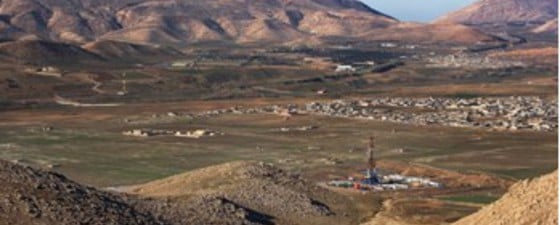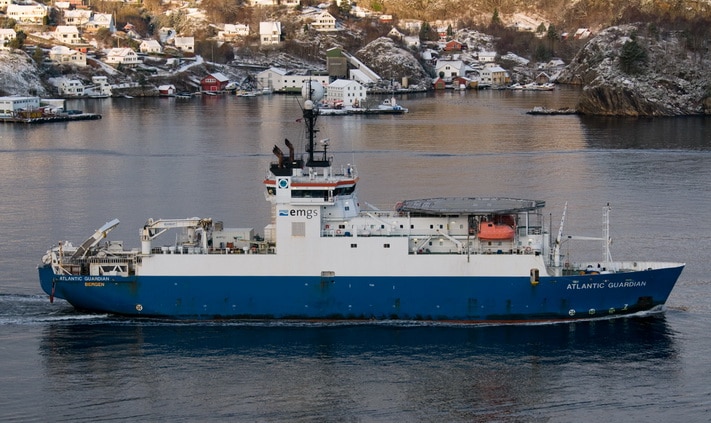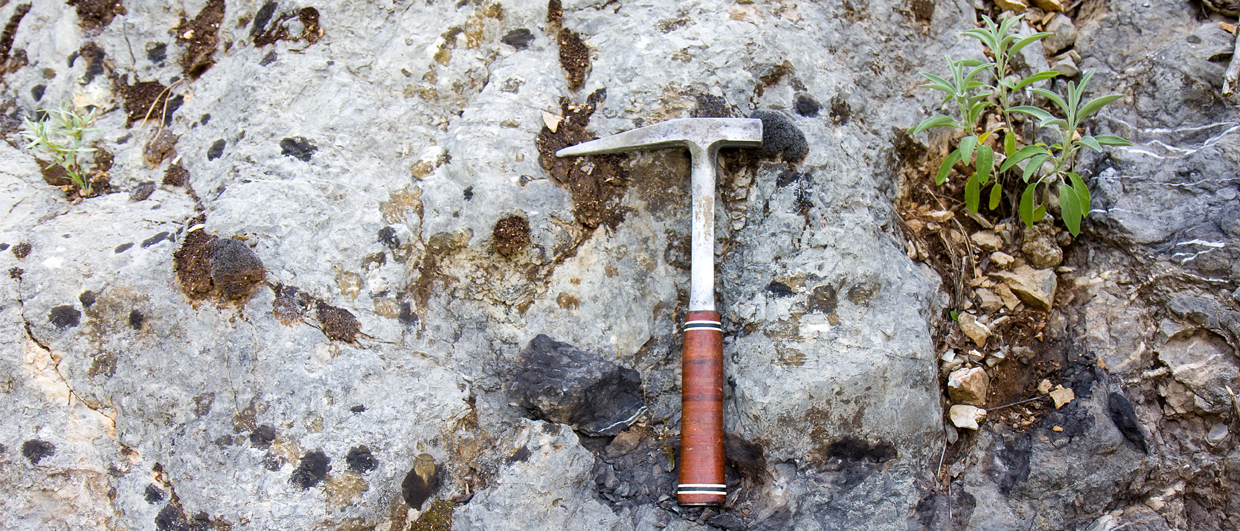Kurdistan is an exciting and very safe place to explore,” exclaims Steve Curd, Chief Geophysicist with Heritage Oil, one of the first foreign companies to move into this region of Iraq after the second Gulf war, back in 2004. “It is a beautiful country, and the scenery is spectacular – from our Miran Block the Zagros Mountains can be seen rising in the distance, giving a wonderful backdrop. And of course, it was the collision of the Arabian and Asian plates in the Late Cretaceous and Early Tertiary which formed not only these mountains, but also the structural traps we are exploring, which have the same north-west to south-east trend as all the major accumulations in the area.”
“The structures can be seen at the surface”
“Many of these structures can be seen at the surface, which helps in the design and cost-effectiveness of our seismic work,” he continues. “It also means we can look at our reservoirs at outcrop, and come across oil seeps which prove what promising acreage we hold.”
Billion barrel prospects
 The Kurdistan Region of Iraq is in the north-east corner of the country and is bordered by Syria, Iran and Turkey, all of which have indigenous Kurdish populations Image: Heritage OilAccording to CFO Paul Atherton, Heritage Oil has been interested in Iraq for over a decade . “We decided to concentrate on Kurdistan for political and security reasons, but also for prospectivity, as the undiscovered potential of the region is estimated by the USGS to be about 40 Bbo and 60 Tcfg (11.4Bboe),” he explains.
The Kurdistan Region of Iraq is in the north-east corner of the country and is bordered by Syria, Iran and Turkey, all of which have indigenous Kurdish populations Image: Heritage OilAccording to CFO Paul Atherton, Heritage Oil has been interested in Iraq for over a decade . “We decided to concentrate on Kurdistan for political and security reasons, but also for prospectivity, as the undiscovered potential of the region is estimated by the USGS to be about 40 Bbo and 60 Tcfg (11.4Bboe),” he explains.
Having built up an extensive database on the area, and with the help of expert advisers, the geologists at Heritage knew exactly the area they wanted, and the company was one of the first to be awarded a Production Sharing Contract by the Kurdistan Regional Government. “First mover advantage meant that we were able to cherry-pick a prized block,” Paul continues. “Our 1,015 km2 Miran block is just 55 km east of the giant Kirkuk field, which has remaining reserves in excess of 10 Bbo. We were awarded it in October 2007 and just 15 months later, in December 2008, we spudded our first well.”
“Our initial seismic survey, conducted in the second quarter of 2008 – the first ever on the block – enabled us to identify two large and very promising anticlinal structures, Miran West and Miran East, together covering 330 km2,” explains Steve. “Initial estimates, reinforced through an independent study by RPS Energy, suggest that the block contains in-place reserves of 3.4 billion barrels of oil. Where else in the world nowadays have you a chance of discovering giants like this?”
Fractured limestone reservoirs
 A seismic line across the Miran block clearly shows the two structures of Miran West and Miran East Image: Heritage OilAs reported last year (GEO ExPro, vol. 6, no. 4, p.74), the first well, Miran West-1, drilled to a depth of nearly 3,000m, found a gross oil-bearing column of 710m with three Cretaceous reservoir zones. Estimates for the field suggest that it has in excess of one billion barrels recoverable, and although testing was incomplete, Miran West-1 flowed at a maximum rate of 3,640 bopd from a single upper reservoir interval.
A seismic line across the Miran block clearly shows the two structures of Miran West and Miran East Image: Heritage OilAs reported last year (GEO ExPro, vol. 6, no. 4, p.74), the first well, Miran West-1, drilled to a depth of nearly 3,000m, found a gross oil-bearing column of 710m with three Cretaceous reservoir zones. Estimates for the field suggest that it has in excess of one billion barrels recoverable, and although testing was incomplete, Miran West-1 flowed at a maximum rate of 3,640 bopd from a single upper reservoir interval.
“As the seismic revealed structures with substantial vertical relief, possibly trapping a significant column of hydrocarbons, and we had no other knowledge of the prospect, standard industry practice meant that we drilled with high mud weights, in case we encountered a high pressure gas column,” Steve explains. “However, we found oil, under much less pressure, so our high mud weights tended to invade and contaminate the reservoirs in the vicinity of the well. This is not a major issue, but it meant that we were not able to properly test the lower horizons. The second well, Miran West-2, is being drilled with the knowledge gained from the first well and therefore with appropriate drilling parameters and equipment to gain maximum information.”
The main targets in this part of Iraq are all Cretaceous in age , although in northern Kurdistan the Triassic is also hydrocarbon bearing, and in other parts the Jurassic may be prospective. The principal reservoir horizons in this structure are the Late Cretaceous Shiranish and Kometan Formations, and the Early Cretaceous Qamchuqua. These are all carbonates, principally limestones, extensively cracked as a result of folding and therefore exhibiting excellent fracture porosities. “The highly fractured nature of the rock means that we expect recovery rates of between 50 and 70%,” says Steve. “Data gathered from the initial test indicates that a production rate of 10,000 bopd per well should be achievable.”
Secure and safe
 Photo: Heritage OilMiran West-2 was spudded in November 2009, about four kilometres north-west of the first well, and is expected to take four months to drill, so the field is already well on the road to development, with first oil expected as early as this summer. “Initially, we expect to produce about 5,000 bopd for local consumption,” explains Paul. “We will eventually export much larger quantities via the Iraq-Turkey pipeline, which has a capacity of 1.6 MMbopd. At the moment the export payment mechanism via Iraq has not been clarified, but we are confident that this will be resolved, as the money from exports from this area will benefit the whole country, not just Kurdistan. As soon as that happens, we will look to begin exports from Miran.”
Photo: Heritage OilMiran West-2 was spudded in November 2009, about four kilometres north-west of the first well, and is expected to take four months to drill, so the field is already well on the road to development, with first oil expected as early as this summer. “Initially, we expect to produce about 5,000 bopd for local consumption,” explains Paul. “We will eventually export much larger quantities via the Iraq-Turkey pipeline, which has a capacity of 1.6 MMbopd. At the moment the export payment mechanism via Iraq has not been clarified, but we are confident that this will be resolved, as the money from exports from this area will benefit the whole country, not just Kurdistan. As soon as that happens, we will look to begin exports from Miran.”
“We can go about our business without fear”
Which brings us to the inevitable question: bearing in mind everything we read about Iraq, what is it like to work in Iraqi Kurdistan? “It’s great,” says Steve. “It’s very stable and very safe. Since March 2003, there has only been one bomb in the areas administered by the Kurdistan Regional Government, no foreigners have been kidnapped and not a single coalition soldier has died. The local Kurdistan security force is excellent and we have very few fears for our safety. The main towns have comfortable western-style hotels and the locals throughout the State are welcoming and hospitable. It is also very interesting historically, so there are plenty of places to explore in my time off.”
Heritage has a Chinese crew working on the drill site, but uses and trains local staff wherever possible. “Our drivers, security and labourers are all local, and we also have Kurdistan geoscientists, administrators and logistics people,” says Paul. “This is a very important policy for us. We are also involved at the community level, working with schools and mosques in the Miran area. Heritage’s objective is to support development in local communities. We recognise the importance of engaging with local stakeholders and believe that by working closely with host communities we are better enabled to meet the challenges facing us.”
“There are now about 25 international oil companies working in the Kurdistan Region of Iraq, and flights come to Erbil from all over the world,” adds Steve. “There are no issues – basically, it’s not the Iraq you hear about in the news!”





